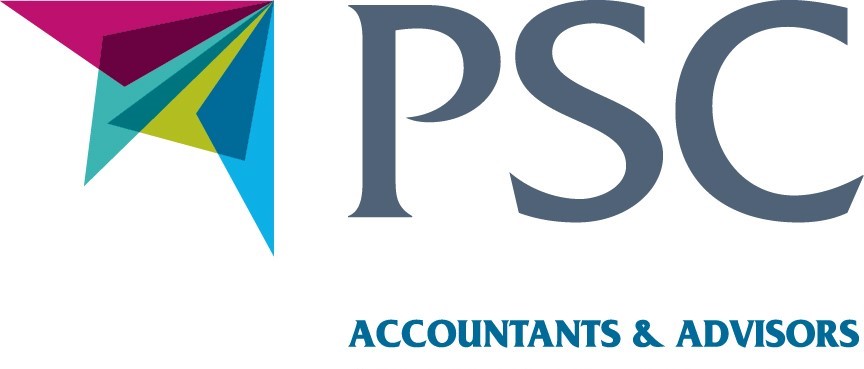
What is auto-enrolment?
Ireland’s auto-enrolment (‘AE’) pension scheme comes into effect on 1 January 2026 and will provide pension coverage for up to 800,000 employees who are not currently part of a pension scheme, please click link for full guidance. Auto-enrolment is a new retirement savings initiative that automatically includes individuals once they meet specific eligibility criteria. The aim of auto-enrolment is to substantially increase the number of employees who are currently saving for their retirement.
Auto-enrolment will have significant implications for employers. For many, it will present a major compliance and operational challenge and give rise to additional business costs.
The main features of the AE scheme (to be known as ‘My Future Fund’) include:
- ‘Eligible Employees’ i.e. those aged between 23 and 60, who are not currently in a workplace pension scheme, and who earn €20,000 or more per annum will be automatically enrolled in the scheme.
- ‘Soft mandatory enrolment’ All employees who meet this criteria will be automatically enrolled into a new, State-run, retirement savings system but with the facility to opt out within certain time limits (subject to mandatory re-enrolment after two years). This will be known as “My Future Fund”.
However, employees will be exempt from being automatically enrolled in My Future Fund if they (or the employer on their behalf) are paying contributions into a qualifying occupational pension plan, Personal Retirement Savings Account, once this is showing on their payslip by no later than December 2025.
- Employees who are under 23 or over 60 years of age may choose to opt into the scheme voluntarily.
- Employer and employee contributions will initially be set at the rate of 1.5% of earnings yearly, rising gradually to 6% over the next 10 years. The State contribution will be set at 0.5%, rising to 2% after 10 years.
- The scheme will be administered by the National Automatic Enrolment Retirement Savings Authority (‘NAERSA’).
- Auto-enrolment will not apply to the self-employed or Proprietary Company Directors (PRSI Class S).
How it works for employees
- Automatic enrolment: You will be automatically enrolled if you are between the ages of 23 and 60 and earn more than €20,000 annually, unless you are already in a pension scheme through your payroll.
- Contributions:
- Initial: You will contribute 1.5% of your gross salary, which your employer will match. The government will also contribute a 0.5% top-up.
- Phased increase: Contributions will gradually increase every three years until they reach 6% each for both the employee and employer by year 10.
- Opting out: You can opt-out after 6 months. If you opt-out, you will receive a refund of your own contributions, but employer and government contributions will remain invested in your pot.
- Re-enrolment: You will be automatically re-enrolled every two years if you have opted out and still meet the eligibility criteria.
- Pausing contributions: You can also pause your contributions for up to two years without a refund and then restart at any time before the two-year pause period ends.
- Investment: Contributions are invested and can be accessed at age 66. A default investment strategy is in place, but alternative options will be available.
- Portability: The scheme uses a “pot-follows-member” approach, meaning your savings stay with you when you change jobs.
How it works for employers
- Administration: The National Automatic Enrolment Retirement Savings Authority (NAERSA) will handle the administration of the scheme, with minimal administrative work for employers.
- Contributions: Employers will be required to deduct employee contributions and remit the combined total of employee and employer contributions to NAERSA with each payroll run.
- Record-keeping: Employers will need to maintain records and provide employees with information about the scheme.
- Eligibility: NAERSA will identify eligible employees using Revenue payroll data and this will feed through to the employers payroll software.
Will company directors be enrolled?
This depends on the PRSI class that you are contributing as a company director. If you pay PRSI as an employee and meet the eligibility criteria, then you will enrolled. But if you are registered as self-employed (PRSI Class S) then you will not be eligible.
Mandatory contributions
Employers, employees and the State will be required to make contributions based on a percentage of an employee’s total remuneration (capped at €80,000 per annum) into My Future Fund. The contributions will increase on a phased basis as follows:
Do existing schemes need to meet standards to be exempt?
No, once there is a pension contribution paid through payroll from an employee or employer, the employee will be deemed as having pension coverage already and won’t be enrolled with respect to that employment. However, if you have another employment for which you are not contributing to a pension through payroll, you may be enrolled in respect of that employment.
By the end of year six of the operation of the auto-enrolment scheme, at the latest, standards for the exemption of existing pension schemes will be developed with the assistance of the Pensions Authority.
Until then, employers can continue to decide the plan membership terms for their employees, including the rates at which contributions will be payable. As long as a contribution is paid into the plan (of any amount), the employee is exempt from auto-enrolment into MFF.
There is no provision in the auto-enrolment legislation for employers to automatically enrol employees into their own pension plans or PRSAs. Under current laws, employees must give express consent to the deduction of pension contributions from their earnings. Employees who do not consent will be automatically enrolled into MFF, unless the employer pays a contribution to the plan on their behalf. For this reason, for any employer who wishes to use their own pension plan for auto-enrolment purposes, the employee engagement process will be critical.
When will auto-enrolment start?
Auto-enrolment comes into effect from 1 January 2026. In reaffirming the commencement date recently, Minister for Social Protection Dara Calleary outlined all the actions currently underway to ensure that the new system is up and running on schedule.
What are the consequences of failure to comply with the legislation?
All employers with at least one employee who is subject to income tax in Ireland will need to comply with the legislation. It is important to note that a breach of the legislation is a criminal offence with sanctions ranging from fines of €5,000 to €50,000 and potential imprisonment, depending on the offence committed.
Employers are also prohibited from hindering, penalising or threatening penalisation against an employee for participating or proposing to participate in My Future Fund. Penalisation is widely defined under the legislation and includes, for example:
- suspension, lay-off or dismissal
- demotion, loss of opportunity for promotion nor withholding of promotion
- negative performance assessments
Claims in respect of penalisation could result in a direction from the WRC (or the Labour Court on appeal) to an employer to:
- facilitate the employee’s participation in My Future Fund
- pay any contributions due for that employee from the date they should have been enrolled
- rectify any contraventions of the legislation
- award compensation in favour of the employee (up to four weeks’ remuneration)
What should employers do now?
- Identify who in your workforce qualifies for automatic enrolment and who does not.
- Ensure payroll data is correct by having correct date of birth for all staff members as well as ensuring pension contributions are processed via payroll.
- Every employer will need to register as an employer on the employer portal through the MyFutureFund website between 1 December and 31 December 2025. NAERSA will write to all employers in the coming weeks with details of how to register for the portal.
- Communicate with all staff regarding the company scheme if applicable and the auto enrolment scheme.
- Update existing pension schemes and employment contracts as needed to ensure compliance with the Auto-Enrolment Act.
- Take action sooner rather the later. Every employer in Ireland must be compliant by 1 January 2026 and if you need support from your current pension scheme administrator in connection with your preparations for the commencement of auto-enrolment, you would be well advised to reach out now.
- Liaise with your Payroll Agent as soon as possible to ensure payroll processing is in order for your staff.
How will the employer portal work?
You and/or your payroll/tax agent will be able to access the MyFutureFund employer portal using the same credentials used to access Revenue Online Services (ROS). Employers can do this directly with their ROS PREM Cert. Agents will be able to access the portal using their Tax Advisor Identity Number (TAIN).
Through the portal, you will be able to access information about contributions paid/owed and set up your payment method. The fastest and easiest way to make sure contributions are paid on time is by setting up a direct debit.
The portal will also facilitate employers who do not use payroll software to pay contributions.
Useful Links:
Further resources, which set out the business payroll processes in more detail are available from the NAERSA webpage at https://helpcentre.myfuturefund-nonprod.ie/ under ‘Technical Guides’.
https://www.gov.ie/en/department-of-social-protection/campaigns/auto-enrolment/
